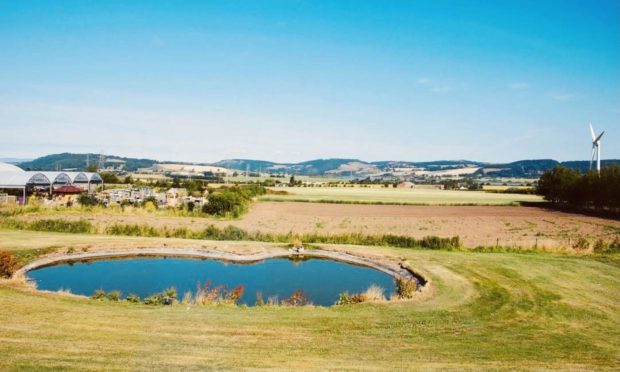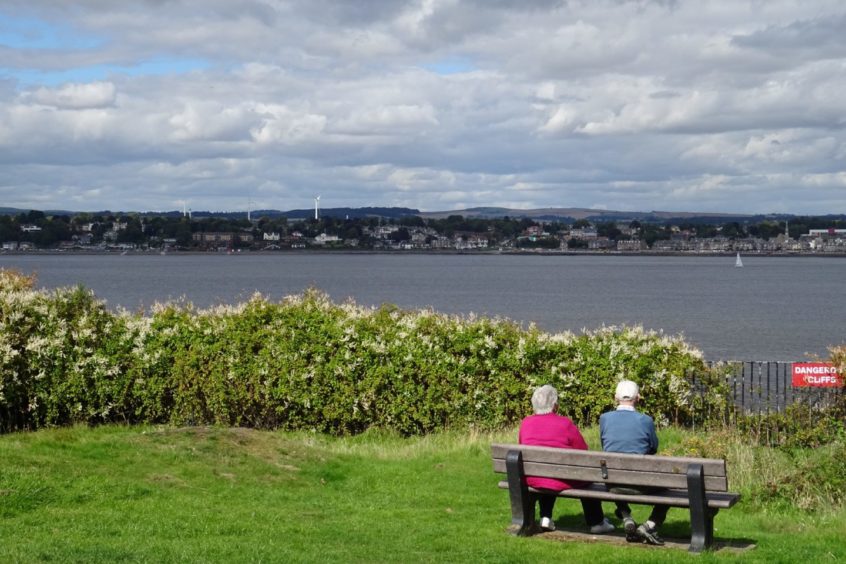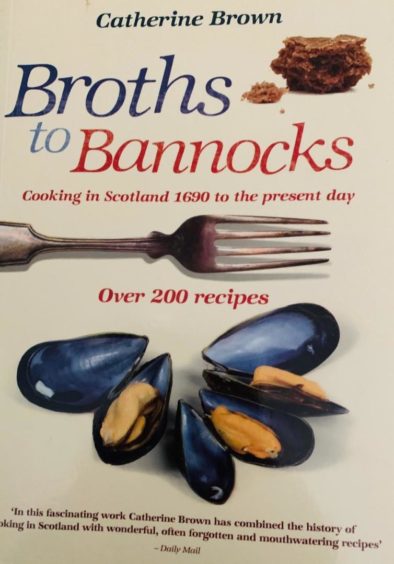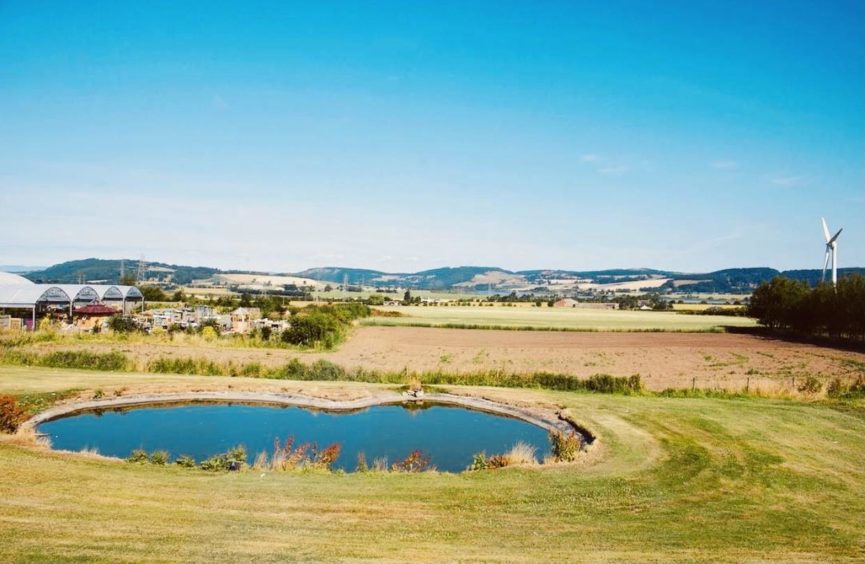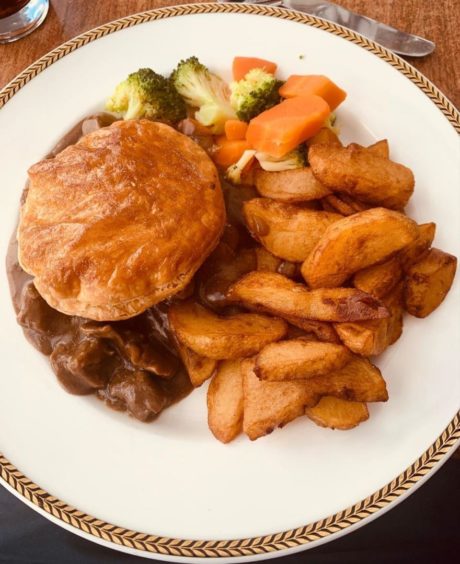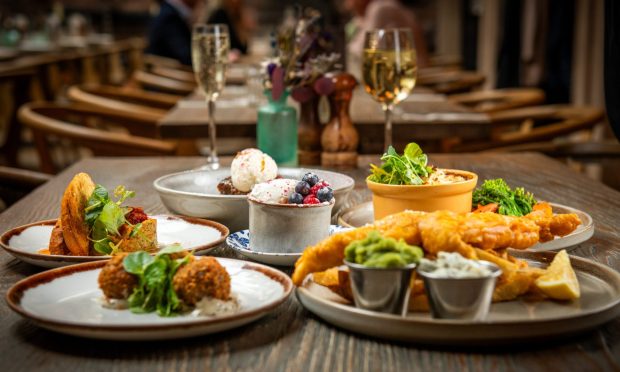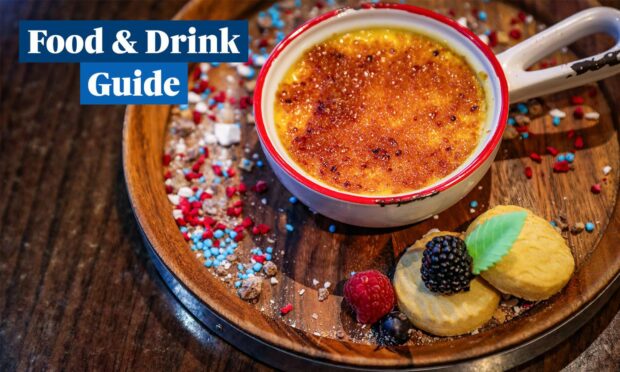Land and sea are just as important as each-other, argues Murray, ahead of lunch at Jamesfield Farm Shop and Restaurant in Abernethy.
It would seem that Scottish Tory leader Douglas Ross – a man who has never forgiven God for not making him Carrie Symonds – is now intent on being hated as much on land as he is at sea.
His spectacular show of indifference to the problems faced by Scotland’s fishing industry at least kept much of the vituperation directed his way mainly offshore, where the sound of the sea drowns out even the most bitter tears of neglect, hypocrisy and abandonment. But not for long…
Ross’s volte face on fishing wasn’t even the latest show of inconsistency from a man not known for his lasting belief in anything other than himself and his own increasingly precarious position – eternally caught somewhere between the stirrup and the ground.
In his blatantly opportunistic inconsistency Douglas Ross is, at least, petulantly, defiantly consistent.
Such is Douglas Ross’s volatility, if I was a fisherman or an increasingly beleaguered Scottish farmer I might wonder whether his backbone is even connected to his neck bone, especially as the latter seems to be made of brass.
Girders have been formed from less.
Meanwhile, as the fish rot on the quaysides, it’s hard to think of him as anything other than a spineless puppet of his Westminster paymasters – good for nothing except, em, doing nothing, the increasingly isolated and lonely Wichita lineman of Westminster.
Stand up for Scottish farmers
Where our food comes from, how it is caught or produced, how many miles it travels to get to us and how fairly everyone is treated in the process is a subject that should concern us all.
That Douglas Ross has said he would stand up for Scottish farmers “every single time” means that all eyes are on him and his Westminster cronies as the Tories attempt to present an unfair, unbalanced trade deal with Australia as something to be lauded.
In September 2020 Douglas Ross wrote an open letter to Scotland’s farmers in The Scottish Farmer magazine; in this letter he promised he would stand up for them on a bigger platform. Despite these pre-election assurances he has yet to comment on this latest threat to farmers – a mere eight months after promising to champion their rights.
Where our food comes from, how it is caught or produced, how many miles it travels to get to us and how fairly everyone is
treated in the process is a subject that should concern us all.
Last week, the President of the National Farmers Union in Scotland said that Scottish farmers feel a “total betrayal” and Scottish SNP MSP for Perthshire Jim Fairlie said: “There are severe consequences for Scotland’s farmers if this deal goes ahead, as it could push them out of business. That would be a complete betrayal of the industry. In the face of these proposals, we have heard nothing from Douglas Ross, despite his promise to stand up for farmers ‘every single time’”.
Fairlie continued: “Now is the time for farmers to have their corner fought for. Scotland’s world-class produce has already been under threat, with our seafood industry being sold down the river – we cannot have the same outcome for our farmers and their fantastic, high-quality beef and lamb.
“We cannot trust Douglas Ross and the Tories with Scotland’s farming sector; they must urgently rule out tariff-free access to the UK which would seriously impede our home-grown produce”. Ross continues to say nothing.
Importance of provenance
I was reminded of the importance of provenance whilst having a post Covid-19 jab lunch in Newburgh last week.
My jab was on a Saturday and thus I felt doubly buoyant because we could make a nice day of it – Newburgh is one of my favourite places to wander around, a place where the sound of the reed beds swaying in the wind can make you feel at peace with the world, or occasionally perhaps an extra in The Wicker Man.
Even better, there was a great charity shop two doors away from my jab location and thus it was possible to combine commerce, charity and health into a half hour slot before adjourning to the Jamesfield Farm Shop and Restaurant for a celebratory lunch.
Things got even better when I discovered the charity shop was run for the benefit of cats, by which time I was positively purring like a Galloway to buy something to benefit our beautiful feline friends.
I found two cookery books of note, the first Blanc Vite by Raymond Blanc, a volume that effortlessly brings together health, speed and ease – three things close to my heart at most times. This is a good book and it’s worth seeking out despite it being out of print – used copies are available online from £3.68 although a new copy would set you back a staggering £270!
Mine was 50p and I’ve already cooked quite a bit from it, my best effort being a carpaccio of sea bream with flavours of the Orient. There is much to enjoy here.
The second book is a fascinating work by food writer and historian Catherine Brown – Broths to Bannocks; cooking in Scotland 1690 to the present day.
This work takes us on a tour of Scottish kitchens, from the late 17th Century to 2010, when my edition was published. It’s completely brilliant, the kind of book you’d keep in the bathroom if you were the kind of person who likes to read arcane facts about girdles whilst sitting on the loo.
Girdles
I bet you’d be surprised to learn that girdles weren’t invented by Playtex but in fact originated in Culross in Fife.
There the Company of Girdle-makers forged huge cast iron plates, some of which were half an inch thick – one baker described his girdle as being five feet long! This is the kind of thing I could spend hours reading about and this book is the place to inspire such rabbit-hole reverie.
One of my favourite parts of the book is the series of recipes from different years, which shows both how our cooking has evolved and also how much of it is still based on key, classic ideas and processes.
This is the kind of thing I could spend hours reading about and
this book is the place to inspire such rabbit-hole reverie.
There are many examples of this but one that struck me first is how a nutritive soup recipe from 1886 is really a much more labour intensive, evolved and pure idea of what would become our currently fashionable bone broth.
I doubt, however, that modern cooks would have the time nor the inclination to start a broth like this, especially if you’re feeling poorly; “into a three-gallon stockpot put a knuckle of veal, six pounds of the shoulder part of beef (commonly called the gravy piece) and a bone of roast beef or mutton.
“Fill the stock pot with cold water to within two inches of its brim, and set it on a stove to boil, taking care not to hurry its ebullition, but allow it to take place gently, so that it may have time to throw up its scum (sic). This should be removed as it rises to the surface and a little cold water should be thrown in occasionally to effect that purpose”.
‘Deracinated’
I confess I had to look up the meaning of ebullition, which I now know means the action of bubbling and boiling. Together with “deracinated” – to be uprooted from one’s natural geographical, social or cultural environment – these are words I shall be dropping into as many conversations as possible, not least because they can easily be fitted into much contemporary political discourse.
Lunch post sore arm jab was at Jamesfield, a place I’ve loved for many years. There’s the garden centre, which is brilliant, the food/farm shop and the restaurant, and I love each element here.
The location is lovely, with a view down to the river but with an immediate aspect of fields, ponds, chickens and geese. On a sunny day, which this was, there is nowhere more delightful to chance upon, especially if you drive from Wormit via the road which follows the river in all its twists and turns.
Jamesfield itself isn’t an amazingly beautiful building, although it certainly feels bucolic and somehow undesigned. But it appeals to the inner hippy in me and also I love the fact that the farm went fully organic in 1985. There’s something charming about this place which seems to have grown more from love and respect for the environment than from the findings of a focus group.
Lunch at Jamesfield
Lunch here was just what I wanted – literally, because Astra Zenica had given me an immediate hunger for a good steak pie and this is what I had.
It was wonderful and all the better for the fact it had been made on the farm. I hadn’t realised that Minick of St Andrews had been installed as butchers on the farm and it was only when wandering round the shop afterwards that I realised that all the meat sold is raised and butchered on-site.
The pie was delicious, a slow cooked beef stew in a rich gravy with a lid of good puff pastry, served with hand cut chips, mashed potato and seasonal vegetables – perfection for £11.65.
If you detect an old school mentality at work here – I mean, I love a choice of chips or potato, not least because I can imagine myself back in one of Dundee’s grand department stores, eating high tea with my mum – then you’d be right.
A dish of salmon cooked in garlic and honey sauce served with green beans and mashed potato (£9.95) looked like just the kind of good, simple fare that sums up Saturday lunch. David’s vegetable lasagne was £9.45 and was served with a salad garnish – of course it was! And of course it was ace.
I love Jamesfield. Here you can buy good beef, organic chicken, Neals Yard toiletries, grains and pulses, used books and great organic vegetables, amongst much else.
You can have a good lunch with a lovely view, even if the ambiance of the restaurant itself is a little like Grace Brothers transported to a care home. That’s no shade because I love the simplicity of this place and that they follow a very pure ethos. Jamesfield is just lovely!
Broths to Bannocks; Cooking in Scotland 1690 to the Present Day by Catherine Brown. £10.25
Jamesfield Farm Shop and Restaurant. Abernethy Road, Abernethy. KY14 6EW. 01738 850498. www.jamesfieldfarmshopandrestuarant.co.uk
More from Murray…
Murray goes down memory lane and recalls the 1970s on a rediscovery of Dundee gems
Murray Chalmers: Going out is indeed the new staying in as restaurants reopen
